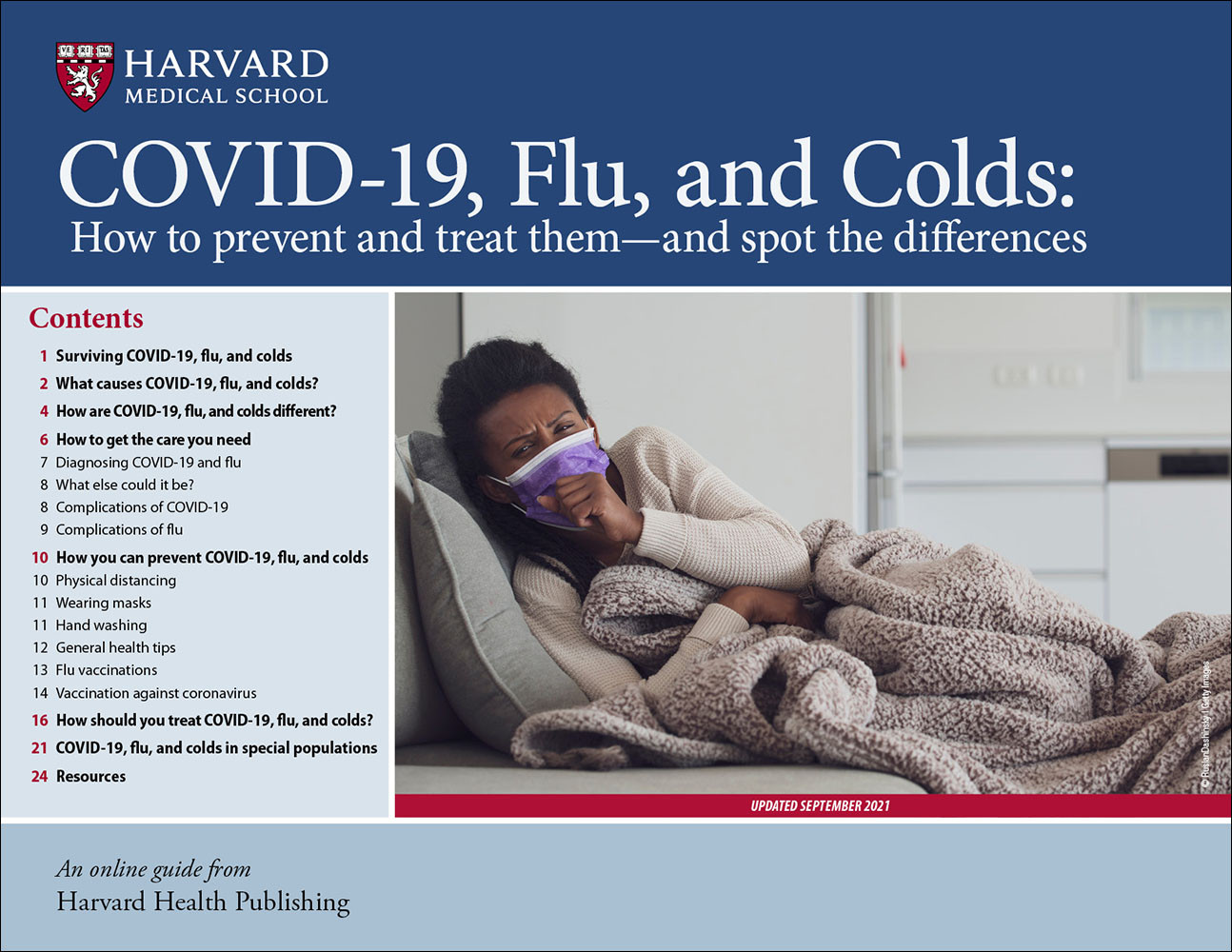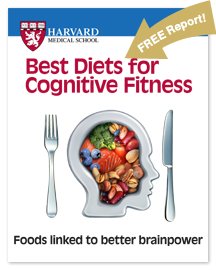Holidays 2020: What's safe and what's risky during the COVID-19 pandemic
Harvard Health Publishing faculty contributors share how they'll be safely spending the holidays, and recommend ways families can help reduce the spread of the coronavirus during the winter season.

Wondering about gathering for Thanksgiving and other winter holidays? Weighing what's safe and what's risky? Harvard Health Publishing faculty contributors share their own plans and recommendations for this year as COVID-19 rates surge in states around the U.S.
Rochelle Wallensky, MD, MPH
Professor of Medicine
Harvard Medical School
What's your plan for Thanksgiving and other winter holidays this year, and why?
My Thanksgiving will be sadly small. It will be a subset of my nuclear family of five. I have three sons: my youngest in high school (he is home and fully remote); my oldest, a junior in college (he is fully remote, isolated with four friends and minimal, if any, other contact, in a lake house); and my middle son is in college and studying in Switzerland this semester. My oldest and youngest will be with us and my middle son will remain abroad. We will not have any grandparents at the table. They live in New Jersey and Maryland, and I do not believe they should/could safely travel. It will not be the picture-perfect Thanksgiving, and yet we will be very thankful we are all healthy and well, and fortunate enough to gather on Zoom, which will have to do this year.
For people planning to gather in person, what advice can you give to reduce the chance of getting or spreading the virus that causes COVID-19?
Tests beforehand are simply not enough. I cannot emphasize this too much. You need to both test and quarantine in order to ensure you are safe.
- The safest way is a 10-to-14-day full quarantine before you meet. This would mean quarantining at your meeting site. Here's why: if you quarantine for 14 days in place X, but then travel by plane to place Y, the exposure on the plane and in the airports could, in theory, put you at risk. It might be possible to use tests creatively with quarantine to safely shorten the duration of quarantine, but no such strategies are currently endorsed.
- These steps are especially important for kids coming home from college campus settings, as they are more likely to be asymptomatic if they have the virus than other people.
- If the weather is good where you are, consider dining outside.
- I would most definitely limit contact among different families, and older generations, because you cannot control, or even understand, all of the people's contacts at the table (for example, two families gathering with grandparents where some of the kids are engaged in in-person education of some sort or other).
- Without following strict quarantine guidance for everyone around the table, I worry a lot about mixing generations, which I recognize is the entire point of the holiday.
- While all of the above is true for all parts of the US, it is especially true where COVID-19 case rates are high. In those places, I recommend working hard to ensure you understand and follow a proper quarantine before gathering.
John Ross, MD, FIDSA
Assistant Professor of Medicine
Harvard Medical School
What's your plan for Thanksgiving and other winter holidays this year, and why?
For Thanksgiving, my wife, our teenagers, and I will be eating on the open-air verandah at my in-laws', while they eat inside. Because of winter weather, this will probably not be feasible at Christmas. I doubt we will be able to share a meal then, but we will visit with masks on.
For people planning to gather in person, what advice can you give to reduce the chance of getting or spreading the virus that causes COVID-19?
I am very concerned about viral transmissions during conventional indoor Thanksgiving celebrations. We know that eating, drinking, and loud talk in restaurants is good at spreading SARS-CoV-2, the virus that causes COVID-19. Data from Ontario indicate that a steep rise in COVID cases took place after Canadian Thanksgiving (the American Columbus Day holiday). I am skeptical that large family gatherings can be done safely without a combination of mass testing and physical separation in the outdoors. Anyone older or with pre-existing conditions should strongly consider virtual participation through a video chat.
Roger Shapiro, MD, MPH
Associate Professor of Immunology and Infectious Diseases
Harvard T.H. Chan School of Public Health
What's your plan for Thanksgiving and other winter holidays this year, and why?
Thanksgiving is really important to my family, and I haven't missed seeing my parents and siblings on Thanksgiving for over 20 years. But this year we decided that being together indoors for multiple days is not worth the risk, especially for my parents, who are in their 80s. So, if we get together at all, it will be something scaled back, it will be outdoors to the extent possible, and probably with my parents joining by Zoom. I don't even know if we will be able to have a meal together, but I hope some of us can see each other in a distanced manner in an outdoor space. I haven't thought ahead yet to holidays in December, but that seems even more daunting as outdoor options dwindle.
For people planning to gather in person, what advice can you give to reduce the chance of getting or spreading the virus that causes COVID-19?
There are some strategies to mitigate risk, but nothing will make indoor gatherings 100% safe. Before any plan is made, risk assessment should take into account the total number and percentage of positive tests in the community where people are coming from (which is now getting higher almost everywhere). Rising cases and a percentage of positive tests that exceeds 3% to 5% should give people pause. Another consideration is whether some family members have a high risk for having COVID-19 (showing symptoms, possible sick contacts), or a high risk for complications (older age, health conditions) if they do become infected.
If there is an indoor gathering, basic measures that make sense include reducing the total number of people as much as possible, mask wearing when not eating, distancing at least six feet, and ensuring good ventilation of the space by opening windows. Not sharing utensils is common sense, but in terms of household surfaces, there is not a lot of data that this virus transmits well from surfaces. Measures to prevent droplet and airborne transmission (aerosols) are more important.
The issue of testing comes up a lot. We know that testing isn't perfect, because it is just a snapshot on the day of the test that says someone is not likely to be infectious on that particular day. If every household had a reliable rapid test and could test all people at the door, that might help. But as we saw with the White House Rose Garden party in late September, there can be false negatives with testing and the virus can still slip through. Also, most people don't have access to same-day rapid testing, so they would need to test a few days before (preferably by a more sensitive PCR test if they are asymptomatic) to get a result before the holiday. However, if someone is incubating virus from an exposure in the past 14 days or so, they may still become infectious after the day of the test.
For a holiday gathering, the worst-case scenario is that everyone gets together and someone starts to feel sick that day. In that case, a negative test from a few days earlier may be meaningless. So, in many ways, quarantine is more effective than testing as a strategy to make holidays safer. In the perfect scenario where someone can entirely quarantine for 14 days prior to the holiday and feels well on that day, the chances that they would be infectious are quite low. Unfortunately, most people are not likely to achieve this level of quarantine. In these less-perfect scenarios, PCR testing close to the event might provide a little bit of added security.
Barry R. Bloom, PhD
Joan L. and Julius H. Jacobson Research Professor of Public Health
Harvard T.H. Chan School of Public Health
What's your plan for Thanksgiving and other winter holidays this year, and why?
Dinner for one at home. All veg.
For people planning to gather in person, what advice can you give to reduce the chance of getting or spreading the virus that causes COVID-19?
My advice would be to have only the nuclear family for this Thanksgiving. If that's more than four to six people, try to socially distance, wear masks where possible, and dine outdoors if possible, or have windows open for some ventilation if dining in the house. Other variables like limiting contact time and distancing beyond six feet are likely not feasible.
Abraar Karan, MD, MPH, DTM&H
Hiatt Residency in Global Health Equity, Brigham and Women's Hospital
Harvard Medical School
What's your plan for Thanksgiving and other winter holidays this year, and why?
While I will be working in the hospital through the Thanksgiving holidays this year, my advice to all is that the virus is spreading quickly, and we are at the beginning of November. Close gatherings among family members, indoors, while eating, drinking, laughing, and socializing are, sadly, a very efficient way for the virus to make its way into your home and your family. With many vaccines in phase 3 trials, we may soon be coming up on a new chapter in the epidemic that could make life significantly safer. It may be wise to use this holiday time to spend with those within your own household, and use video messaging to connect with others around the country.
For people planning to gather in person, what advice can you give to reduce the chance of getting or spreading the virus that causes COVID-19?
If you are going to be gathering in person, make sure that everyone is tested and has a negative result at least a few days beforehand, and advise those people to minimize any social contact the week or so before the gathering. Also, encourage them all to wear masks consistently, especially when indoors around others. Thankfully, transmission on planes is extremely low as long as you are wearing a mask. But you need to be extra careful before and after the flight until you reach your destination.
Image: LightFieldStudios/Getty Images
Disclaimer:
As a service to our readers, Harvard Health Publishing provides access to our library of archived content. Please note the date of last review or update on all articles.
No content on this site, regardless of date, should ever be used as a substitute for direct medical advice from your doctor or other qualified clinician.













